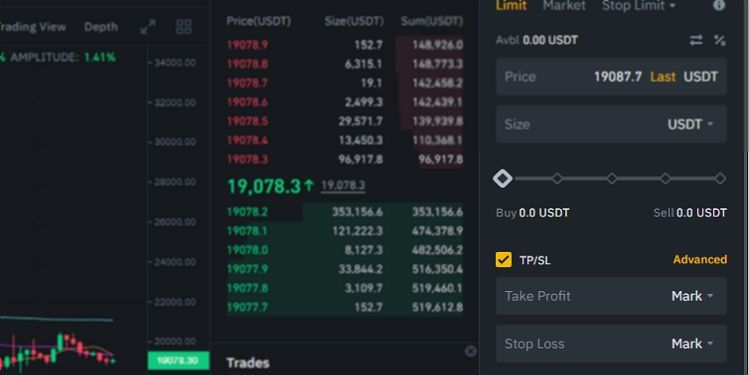Trading crypto involves taking many risks, necessitating traders to use different tools to control their risks, reduce losses, and secure profits. Stop-loss and take-profit orders are also used for risk control, which is why you need to understand how they work.
If you want to up your crypto trading game, you should know more about these, learn how to use them, and figure out the strategies you can use when executing them.
What Are Stop-Loss and Take-Profit Orders?
A stop-loss (SL) is a limit order that specifies how much loss you are willing to take on a trade. It prevents you from making additional losses on a trading position.
A take-profit (TP) works as the exact opposite of a stop-loss. It specifies the price to close out a position for profit. When you have a take-profit order, the trading platform you are using closes your position automatically when the price level is reached.
Stop loss and take profit orders are both limit orders, which means they will be set at predetermined prices, and if the conditions are met, the orders will be triggered. Of course, it is also possible that the price never reaches your specified price, and the order remains untriggered.
These tools are beginner-friendly and are usually effective for short-term trading.
Why Should You Use Stop Loss and Take Profit?
There are many reasons to use stop-loss and take-profit orders; among them are the following:
To Prevent Emotional and Impulsive Trading
Having specific stop-loss and take-profit prices will reduce the tendency to make emotional decisions when trying to exit trades. It is normal to have situations where trades are on the losing side for a long time and later close in profit. Relying on emotional triggers would often make beginner traders close such trades too early.
Furthermore, not having a predefined profit target can cause you to close out profits too early or leave a trade running for too long. Relying on gut feelings to close trades can affect your trading psychology, making emotions like fear, greed, doubt, etc., lead to making the wrong moves.
For Proper Risk Management
Using strategic stop-loss and take-profit orders in planning your trades also helps maintain a tight risk management strategy. The tools help you define your risk-to-reward ratio, the amount of risk you are willing to take in trade in relation to the potential reward.
To Stay Off the Market
Instead of staying and monitoring the market to know the right time to close a trade at a loss or profit, these tools have become useful for these purposes. In addition, you don’t have to monitor the charts all day after trade execution, as you can always predetermine your SL and TP levels and continue with other activities.
They Are Completely Free to Use
There is typically no cost attached to using the SL and TP. Exchanges have them as free-to-use tools for all traders and investors. However, some exchanges may require you to subscribe to a plan to access more complex crypto order types.
Strategies for Setting Stop-Loss and Take-Profit Targets in Trading
Where you set your stop-loss order depends on how much you are willing to lose if a trade does not go in your favor. It should be placed at a strategic point where it won’t be triggered too early and, at the same time, not too far, so you won’t lose too much.
You also should not go beyond the risk level you have set in your trading plan.
Price volatility and fluctuations are some of the market factors you must consider when setting your stop-loss. You don’t want to set it in a place where random market swings and noise can easily trigger it.
When going short (selling), you should set your stop loss above the trade execution point; when going long (buying), it should be below the execution price.
More generally, traders use their risk-reward expectations to determine their take-profit level. It doesn't make sense to set a profit target that will give a reward lower than the potential loss.
Beyond that, you must also consider the overall market conditions using tools like price actions, support and resistance, technical indicators, and other useful factors to know where the price is likely to struggle or reverse.
With all these in mind, we will look at some useful strategies for setting stop-loss and take-profit levels.
Support and Resistance Levels
The support and resistance levels are key price levels where the price will likely have a rebound. A support level stops the price from going further down, while a resistance level stops it from moving further upward.
In a short position, the SL is usually below the resistance, while the TP is above the support. However, in a long position, you should place the SL above the support and TP before the resistance.
Trade Volatility
Here, you can use the market’s volatility to determine where to place your stop-loss order. This strategy requires you to use the market’s volatility to determine where to set your SL. With the Average True Range (ATR) indicator, you can determine how volatile a crypto market is and place the SL at a point the market is unlikely to reach.
Knowing the average movement of the market at a period can also help you to determine the right place to place a TP.
Risk Per Trade
Having a specific amount you are willing to risk per trade is a simple risk management strategy that can help your stop-loss placement. This approach necessitates you have a particular amount you are willing to risk per trade. The amount could be calculated as a percentage of your entire capital.
Let’s say, for example, that you plan to risk only 1% of your capital on any trade, no matter how promising it is. It means you will set your stop loss to let you lose only 1%. So if you have a $5,000 account, you won’t lose more than $50 on a trade.
To set your TP using this strategy, you must use a price level that would give you a profit that is more than the potential loss. Setting your TP according to the ratio is good if you have a specified risk-to-reward ratio. For example, if your risk-to-reward ratio is 1:3, then you must set your TP to a price that would give you a profit that is 3% higher than the potential loss amount.
Trading Indicators
Traders use various indicators to determine where to place their SLs and TPs. They use the Relative Strength Index, Moving Averages, Bollinger Bands, and many more.
The main idea is that the stop-loss should be placed where it cannot be easily triggered, and your take-profit should be where you know the price is likely to reach while still considering your risk-to-reward ratio, trading goals, and other market factors.
Be Dynamic With Your Approach
Many short-term traders rely on stop-loss and take-profit orders to exit trades. These orders have proven reliable in the crypto markets and other financial markets.
These tools will help you focus on your trade exit and risk management strategies. They are also more effective when combined with other risk management practices.
We encourage you to be dynamic about setting your SL and TP. Using a combination of strategies based on market conditions is always a good idea. There are no definite rules governing how you set them, and it is okay to have a unique strategy so long as it gives you the desired result.



